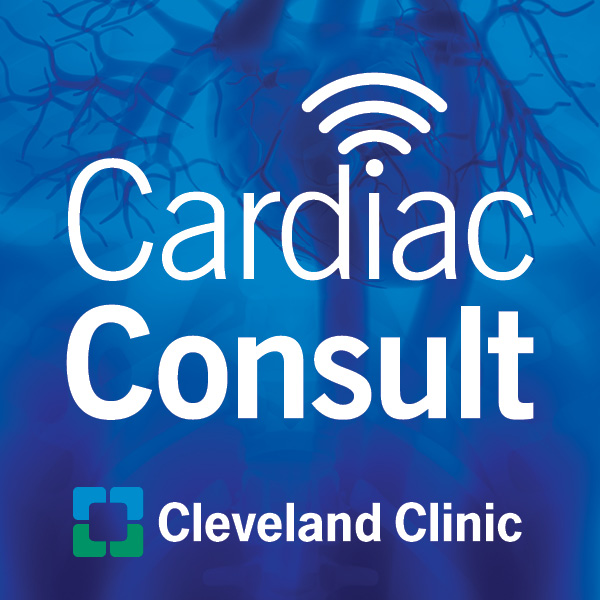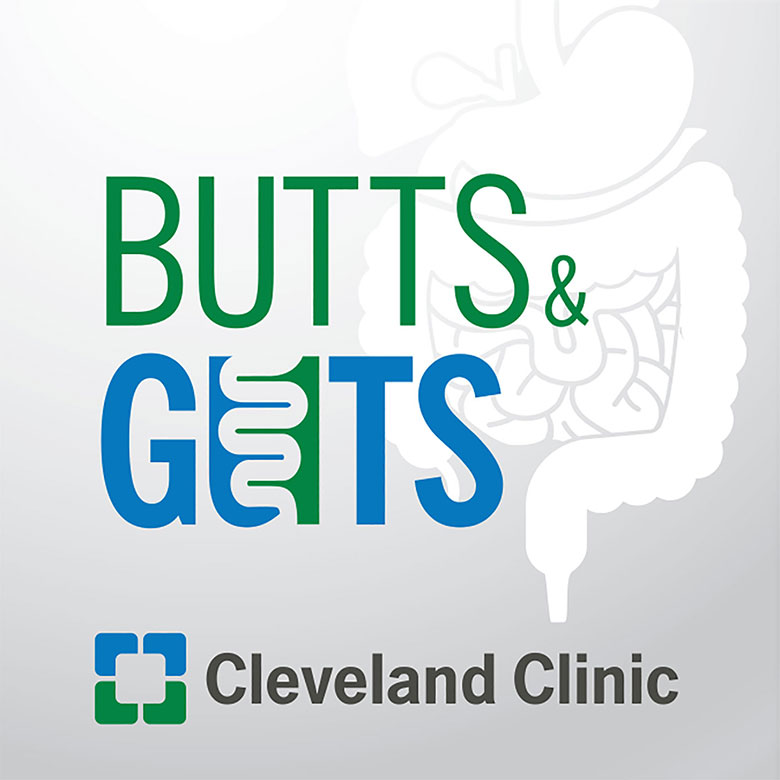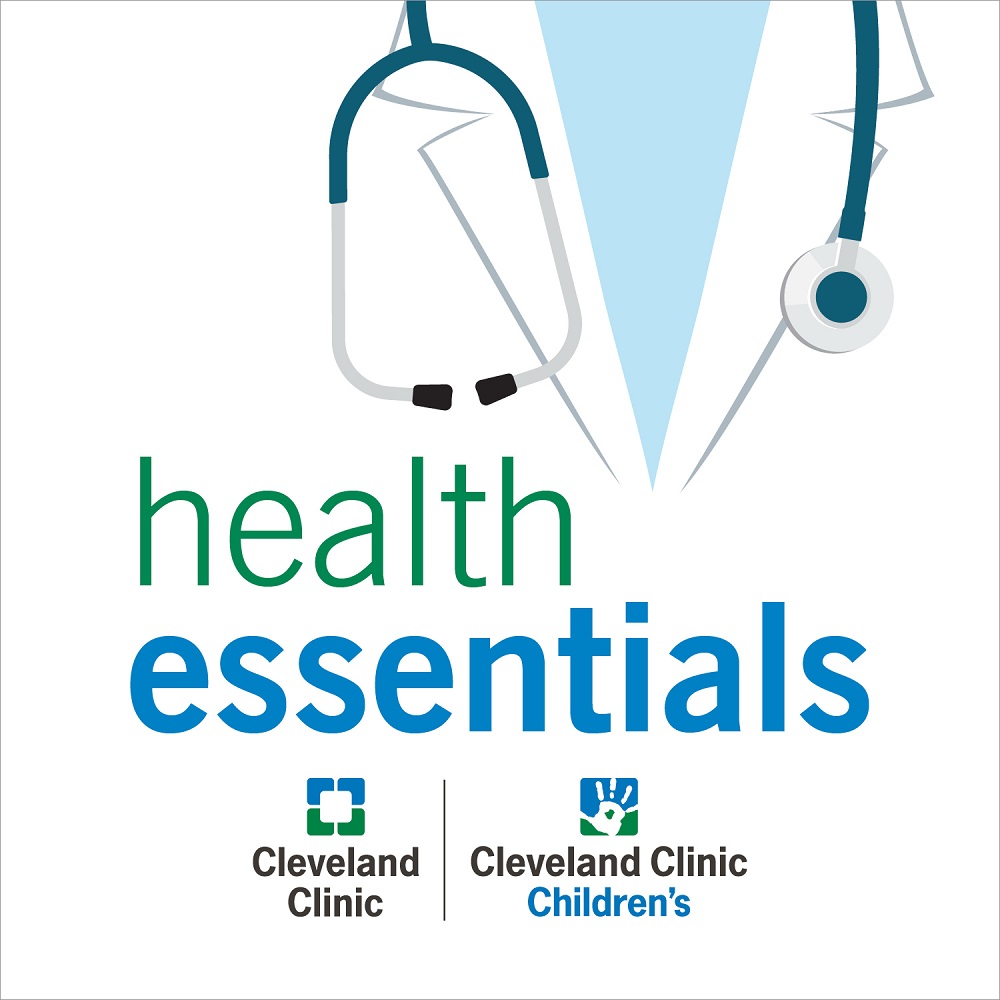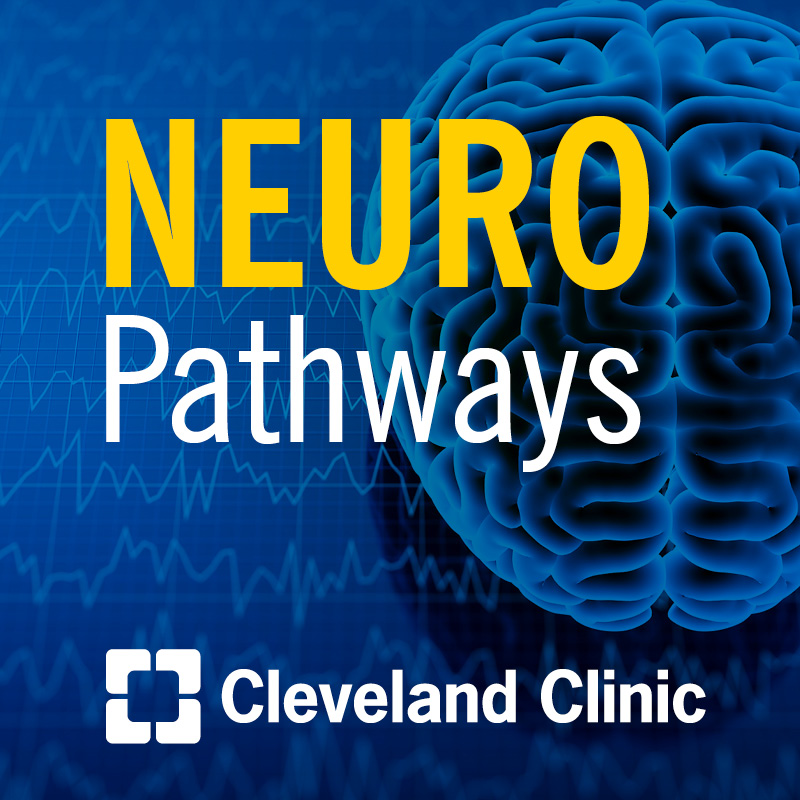Talking Tall Rounds®: Screening Aortic Disease

Francis Caputo, MD, provides an overview of the session, Xiaoying Lou, MD, presents a case, Eric E. Roselli, MD, discusses biomechanics of the aorta, and Christina Rigelsky, MS, highlights the importance of screening family members for possible heritable thoracic aortic disease.
Watch the full Tall Rounds® and earn free CME.
Subscribe: Apple Podcasts | Podcast Addict | Buzzsprout | Spotify
Talking Tall Rounds®: Screening Aortic Disease
Podcast Transcript
Announcer:
Welcome to the Talking Tall Rounds series brought to you by the Sydell and Arnold Miller Family Heart, Vascular and Thoracic Institute at Cleveland Clinic.
Francis Caputo, MD:
Thank you for joining us at our Heart, Vascular and Thoracic Institute Tall Rounds. The theme of today is screening aortic disease, raising awareness for a silent killer. And this is very fortuitous because next week, February 13th is Aortic Aneurysm Awareness Day in Ohio. So, with that, I'm going to introduce Xiaoying Lou, who's going to present several cases about how screening with family history helps identify and helps treat some of these difficult cases.
Xiaoying Lou, MD:
So I thought that instead of presenting one case, it would make more sense to present some examples through a case series of various ways that thoracic aortic disease has been diagnosed through imaging and through screening. So, these first couple cases are diagnosed aortic pathologies as diagnosed through an incidental finding.
So this is a case of a female in her mid-40s who presented to the emergency department. She did have a persistent headache and she also had hypertensive urgency. She underwent a CTA head and neck that was actually negative for anything to explain her headaches, but you can see from the cross-section that they ended up getting here that it did reveal the beginnings of a five centimeter ascending aortic aneurysm. And then this was further worked up with additional CTA chest imaging and an echo. The root was spared and she did have a normal functioning Trileaflet aortic valve. She underwent genetic testing and her family history was negative and ended up getting an ascending aortic replacement with Dr. Svensson and that was a successful surgery for her.
So here's another case of an aortic pathology diagnosis and incidental finding of a man in his early 30s who had a history of anxiety and had recurrent palpitations that were fleeting. He presented to the Cardiology office and fortunately the cardiologist who saw him here at the Clinic ordered an echo to look for structural abnormalities and found a 5.2 centimeter aortic root aneurysm. It was an isolated root aneurysm that was further confirmed on CT scan up to 5.4 centimeters. It did spare the rest of the ascending aorta. He underwent genetic testing that was negative, but on further questioning, it was revealed that his father was actually getting aortic workup for an aortic aneurysm that was diagnosed at another hospital that was up to 4.5 centimeters. It's a little unclear what the timing of this was, but if the father had been diagnosed with that aneurysm, he probably would've gotten an echo earlier but somehow missed that pathway for screening. So it was pretty fortunate that he presented with those palpitations and end up getting that echo. He underwent a valve-sparing root replacement and was successfully treated as well.
So these are a series of families who have had aortic pathology diagnosed through screening. Oftentimes a lot of these families, the first indication in families who don't really have any syndromic features, phenotypically is a Type A dissection in one of the family members. And this father actually presented with a Type A dissection when he was in his late 50s. At that time, his ascending aorta was 4.8 centimeters, which is below the threshold that we would typically prophylactically treat with an ascending aortic replacement. He did undergo genetic workup at some point after being referred to the Cleveland Clinic after his Type A repair and ended up being positive for the TGF beta receptor mutation, which is one of the variants for Loeys-Dietz syndrome. On further questioning, there was on workup, he had a family history of sudden cardiac death in his paternal uncles. No autopsy was done on his uncles, but the story sounded very suspicious for an acute aortic syndrome leading to their deaths. And he also had a father with an abdominal aortic aneurysm. So after the genetic workup, the family was screened for first degree relatives and his son ended up getting screened in his late 20s, was identified to have an isolated root aneurysm up to 4.5 centimeters and underwent a valve-sparing root replacement. His father thought that he was done with his dissection and his aorta being repaired after the Type A, but he did return to us after that genetic screen was positive, underwent further imaging and it was found that he actually had additional growth of his ascending aorta degenerated up to 5.8 centimeters, which you can see here really right after the point where the ascending replacement was done. Also had root ectasia up to 4.3 centimeters and some moderate AI was discovered as well. So he ended up undergoing a redo Bio-Bentall and an arch replacement with BE-SAFER frozen elephant trunk technique with Dr. Roselli and did very well from that and while continued to undergo surveillance imaging. His daughter was also screened. She was in her mid-20s. She was also positive for the mutation and this will be important for her as she considers family planning in the future.
Here's another example of a family who similarly the father, the first feature of this aortic disease in the family was diagnosed with a Type A dissection that occurred in his mid-40s. At that time, his ascending aorta was also below the threshold that we would typically treat at 4.7 centimeters. He underwent a Type A repair with a limited ascending replacement at another hospital in the early 2000s. Eventually was referred to the Clinic from out-of-state. This was 10 years later. At that point he did have a root aneurysm up to 4.8 centimeters, an arch aneurysm up to 5.4 centimeters, all aneurysmal degeneration of residual dissection and he underwent a successful redo valve-sparing root replacement and also an arch replacement with BE-SAFER and frozen elephant trunk with Dr. Roselli. On further workup after he presented with these findings, he did have a positive actin alpha 2 mutation, which, for a smooth muscle dysfunction, it's one of the hereditary but non-syndromic mutations that are out there for aortic pathology. And on further questioning, he did have a family history of paternal uncles who also had aortic aneurysms. So his daughter underwent further aortic screening as part of the genetic mutation being positive in her early 20s, and she was found to have a bicuspid aortic valve and root aneurysm up to four centimeters and an ascending aortic aneurysm up to 4.3 centimeters and she underwent a valve-sparing root and ascending aortic replacement. The father did continue his surveillance imaging a few years after that second operation. It was found that his descending thoracic aorta had now degenerated up to 5.3 centimeters with significant interval growth and had residual dissection all the way down to his iliacs. And he ended up getting a TEVAR with Dr. Vargo with covered stenting down to the celiac access and then a dissection stent down to the bilateral iliacs and also treated his iliac as well with balloon fracture fenestration of the covered stent components. And he had a very nice result with a basically totally treated aorta as you can see here.
So, I think these cases highlight the variety of ways that pathology can be diagnosed either through an incidental finding or through genetic screening, and really highlights the importance of genetic screening for these patients and long-term follow up.
Eric E. Roselli, MD:
I'm going to sort of start out with a discussion about what we've learned about some of the basic science around aortic disease before we get into a lot of discussions about more clinical recommendations about screening and share with you some of the work we've done over the last couple of years. Disclosures are shown here, none of them are particularly relevant, although every one of these companies that makes a device has provided a grant for our research.
And I think that one of the most important things to point out is how important aortic disease is. Not only has it become a representative more than one in five, maybe one quarter of the operations we do in our department, but it's an important cause of death. And so, this is a really amazing study that was done in Japan where all patients who had an out-of-hospital cardiac arrest in a regional area, not only underwent autopsies but had a CAT scan of the cadaver and they found that 8.1 percent of those sudden deaths were due to ascending aortic dissections. That is a huge number of sudden deaths, completely underappreciated problem. And so everything we talk about here is critically important because we sure can save lives a lot easier when we do it in an elective fashion in an emergency situation. And you heard from the examples from Dr. Lou that a lot of times these acute aortic syndromes occur at closer to normal-sized aortas. They're certainly under the typical guideline thresholds. Now that guideline has shifted over a half a centimeter. Dr. Kalahasti was an important member of the guidelines committee to help do that and hopefully we'll save more lives by operating sooner. But the problem is, and Dr. Desai also and his team has done a lot of great work following up on Dr. Svensson's recommendations that we need to better understand this correlation between the size of the aorta and the risk and its relation and association to a patient's body. But really all we're doing is providing mechanical solutions to what's really a biochemical problem. What do I mean by that? Well, there's degeneration happening in the aorta way before these patients present with acute aortic syndrome, and we talk about the law of Laplace and that's great. And I don't mean any disrespect to Sir Laplace, these rules are still in place, but these are laws of physics that assume that there's a linear, elastic and isotropic behavior, the materials we're dealing with. We're not talking about... I don't mind being called a plumber once in a while, but we're not plumbing with manmade materials. We are dealing with vascular tissue and vascular tissue behaves in a nonlinear anisotropic fashion.
And so I think we need to appreciate what's happening at a microscopic level. This isn't news. We know that the media layer is what degenerates in the aortic wall and there are over 50 layers of lamina within the media when we look at a close level and it's made up of collagen, elastin and smooth muscle cells, proteoglycan materials. And if we get even smaller in looking at what's going on, there is a ton of interactions between proteins and other components to maintain the integrity of the vessel wall. And as we learn more about these genetic disorders, we learn more about the mechanisms of what makes a wall of a vessel healthy, especially an aortic wall as we learn about these different defects and how these different interactions occur.
We see that these medial changes occur in congenital heart disease. And you can see in the images in the center where it goes from normal, sort of more organized looking lamina as the disease becomes more severe, you see this disorganization. The black components are the elastin fibers. Medial degeneration used to be called cystic necrosis is an accumulation of proteoglycans in that space that breaks down this regular order of construct at a microscopic level that maintains the integrity of our aortic walls. And this happens with age as well, even in a normal situation. So you can see a comparison of a three-year-old on the left and an 83-year-old on the right. Looks a little tighter on the three-year-old for sure.
And we know that throughout the aorta, each region of the aorta is unique. There is from the get-go some embryologic variability about where these cells come from. So no surprise to see that we see the aortic segments of the aorta behave a little bit differently. You saw that cartoon with hundreds of different proteins interacting with one another to maintain vessel wall integrity. So this is not just a tube, this is not just a tube that Sir Laplace described. This is an organ and it's a physiologic organ that's under an amazing amount of stress. A more normal looking laminar flow is depicted by this MRI on the left in a tricuspid valve. But even with a normal functioning bicuspid valve, we see those flow patterns are disturbed and put different kind of stresses on this wall.
And so a researcher at Yale, Jay Humphrey, has done a lot of work to describe a mechanism of pathology, this mechanotransduction, this maladaptive remodeling that occurs. So one of those little sort of components that maintains the integrity of the wall is off just a little bit and you add stress from an abnormal hemodynamic environment and it's a continuous cycle of degeneration happens over a lifetime. Well, we have a unique opportunity. The opportunity is to study this. Despite the minimally invasive revolution in surgery in general, and especially in aortic surgery, most of what we do is open and we have this great research center across the street and we have teams and a whole bunch of new ways to study things. And so we decided we shouldn't just be pitching these pieces of aorta we take out, we should study them. And that's what we've done in the MATADORS Study, which is the Multidisciplinary Study of Ascending Tissue Characteristics and Hemodynamics for the Development of Novel Aortic Stent-grafts. What do we do? Well, we gather all the clinical information on all these patients as we would with any other patient that comes through our system, but we look closely at in vivo behavior. We're gathering epiaortic images and TEE images and doing more detailed analyses with speckle tracking like you see on the video on the left.
We're looking at the biomechanical properties in the biomedical engineering lab. You can see the unilateral stretch at the top and this biaxial load testing that's happening with the specimens in the little video down in the middle. And then we've worked with Suneel Apte's team to look at not only histology, I should have added in there omics. So this is both a histologic and an omics kind of assessment. That's all included part and parcel with the MATADORS Study. So, any patient that gets enrolled gets a ton of data collected as they pass through pretty much standard of care.
And so what our objectives were, and this came about because we were talking about what are we going to do with stent grafts in the ascending aorta, discussions with industry partners, the FDA. And we created this novel partnership with the clinicians, the research team, the engineering team, and industry and FDA sponsors to understand the differences in ascending aortopathy, both dissection and aneurysms, and to try and understand some of the boundary conditions and validation testing that's needed for new devices, but also to understand in detail about tissue architecture and pathogenesis. So, discovery and also important practical information in our translational research lab.
We can enroll anybody with an aneurysm or a dissection. We're not including some of those things in the middle because those specimens are just too funky to look at really, to be clear about it. And we have controls, many of which are from transplant recipients. We've enrolled 307 patients, 26 of which are control aortas. Pretty middle-aged patients, typical aneurysm age, a remarkable number of acute Type A dissections. And the research team's done an awesome job of coming in the middle of the night and getting those specimens and working through it. About 40 percent are bicuspid valves, which is really cool. And 36 patients with known described genetically confirmed genetic familial thoracic aortic disease.
Of these patients with bicuspid aortopathy, we've had a good distribution across the various aortic phenotypes. And these are some of the things that we published recently and found. We found that the elastic energy varies by age and region. So in one review of 123 specimens, we compared how these aortas act across the different regions, that is in the root, in the proximal and the distal ascending aorta with a focus on elastic energy. And one of the things we found was that elastic energy varies as you go from proximal to distal aorta. It also varies by age. You can see the differentiation between the left and the right side, right side, older patients. The differentiation across range still is maintained despite the older age. It's just dampened a little bit.
We also found that elastic energy varies by valve type. Interestingly, there was better elastic energy, more preserved elastic energy in bicuspid aortic valve patients than those with either tricuspid aortic valves or connected tissue disorders. This disappeared, this difference once patients got above 55 years. What does that tell me? It tells me, I look at it a little differently when I look at a bicuspid aortic valve patient and they're older versus one who's younger and we're kind of looking at a borderline aorta in those patients.
What else did we study? We looked at correlations of clinical outcomes and how this tissue acted in the lab. Emily did a lot of both of the work on both of these studies. Congratulations to her, to getting them through the whole process of publication. And we did random forest analyses comparing these clinical outcomes. And interestingly, we found you can see aortic diameter at the bottom of that Vim map in the middle is a lot less important to predicting how these tissues are going to act in age, body mass index, tissue thickness, and the presence of a tricuspid aortic valve. Interestingly in this study we also saw the inflection point in age was somewhere around 55 years. And also interestingly, we saw thicker tissue was weaker than thinner tissue. A little counterintuitive and certainly different than what Laplace would say.
And so some of the summary of what we found so far in some of these boundary condition studies, and we have many more things going on, is that there are inherent regional differences along the length of the aorta. As we move from the root to the distal aorta, we see an increase in stretch thickness and stored energy and reduced axial and circumferential stiffness. Tricuspid aortic valve patients may have a little worse disease than bicuspid valve, and interestingly, the thicker tissue performed worse. Age reduces aortic function along the length of the aortic and is the strongest predictor of the mechanical response in the lab. We also had done some studies, this was some of the first studies we did in concert with Suneel Apte and Frank Cikach really got us kicked off with enrolling a ton of patients in a short period of time. We took these specimens and ground them up and put them through mass spectrometry to determine what is that blue stuff in the middle? What is that stuff in the cystic so-called space? What are these proteoglycans? There's a ton of proteoglycans in there, but we identified a massive amount of aggrecan and versican. These are known most commonly to be in the cartilage. It absorbs water. It does a good job and an important job in cartilage. Not so good to absorb water into the wall of your aorta though, it breaks down the construct. And so there's a suggestion that it may be part of the pathophysiologic mechanism of this disease. We also studied it in a Marfan mouse model and found the same sort of process was occurring in those mouse aortas that we saw in all these human specimens. It was consistent across multiple ideologies of the aorta, these histologic findings, as well as this reduced ADAMTS-5 activity, which again, is suggestive is a possible mechanism. And so I came up with this idea of there's this loss of adhesion and mechanical sensing. As this proteoglycan builds up, it separates the smooth muscle cells from their connections to all those other important structures and you get death of these cells.
The point is here, all of these different genetically triggered sort of problems all funnel into similar histopathologic mechanisms leading to what really is not necessarily the diseases we talk about, but the complications of underlying problems. Aneurysm and dissection are late complications or late manifestations that funnel into those problems. This work on aggrecan may be suggestive of a new biomarker. A team from Germany took our work and studied it with some assays, and these are some of the things that we're doing. We got two more papers on that are going to be presented as oral presentations at the AATS. We're doing some whole-genome sequencing. We're going to be enrolling in an MRI study with Debbie Kwon's team and Chris Nguyen's team with the new MRI scanner. We're developing a better assay for aggrecan and we've developed ways to look closer at the histology to quantify what we're seeing. I have to say thank you to all the collaborators, both from industry, the FDA, and our internal team over in Lerner, the bioengineering team has been fantastic to work with, as well as our partners at Northeastern University who helped us with some constitute of modeling and look forward to sharing more with everyone and talking more about how we can improve patients' lives. Thank you very much.
Christina Rigelsky, MS:
As kind of was alluded to already this morning, we do have a problem in identifying the right patients to get screening. So we need to use all the tools that we have in order to find people so that we can screen appropriately and prevent dissection and death. Certainly, over the years we've done far better in identifying people who have syndromic indications for aortic disease with Marfan syndrome and Loeys-Dietz and other syndromic cases because they have features that help us recognize that there could be a problem when we screen, but we do need to use other tools because there are many other hereditary causes that don't cause syndromic features.
One of the things that I'm really going to emphasize today is the power of the family history. We've talked a lot about genetic testing over the years and it's become more widely available and used, but we still don't find a genetic cause in so many cases that family history can really fill the gap even when we don't have a genetic marker to follow in a family. It is an inexpensive tool from the standpoint that we don't have to order anything else. But from a time standpoint, since time does cost money, this is where you can utilize genetic counselors as well so that we can go in depth with the family history. And then, of course, often patients are identified because of imaging that they have aortic disease incidentally, but it's also what we need to offer to family members to make sure that we're identifying disease early.
So first with family history, it really can be a twofold approach. Just by taking a family history, including in primary care in the cardiology office, we can identify that there's already a family history and then make appropriate recommendations for that individual and other family members to be screened. But then once we already have a patient in front of us, who has aortic disease, we need to take an in-depth family history. Particularly what we do as cardiovascular genetic counselors is take the whole family history so we identify everybody who needs screens so we can specifically tell the patient who and how family members should be screened. This is definitely an area as I have evolved as a genetic counselor that has taken up much more of the time that I spend with patients because there are a lot of barriers for family members to get screened and we have to kind of help address that so that we can reduce those barriers.
It also is a good opportunity, particularly when we don't end up finding a genetic cause to get additional information that can help in the individual with aortic disease care, taking information about sudden death and heart attacks, what they know about the presumed heart attack, and if it could potentially have been an aortic event, if there's any early stroke or coronary disease or MI, if there's congenital heart defects in family members or if there's other history of dissection or aneurysm so that we can make sure that we don't neglect screening other areas. I can't tell you the number of times I go to one of the physicians who are on this panel today and ask for extra imaging just based on the family history, even when we don't find that it's Loeys-Dietz or something else where we know there's risk for brain aneurysms.
And then, if there is family history of dissection, it's really important for us to try to get information if there is any on the size of the aorta after the dissection was identified. As the case is presented, sometimes we can find that it was under five centimeters and then we need to make different recommendations for the family members who are still being followed so that we can recommend earlier surgical intervention even when we don't find a genetic cause.
So on to genetic testing, certainly it is the most straightforward when we find a clear pathogenic variant in one of the aortopathy genes where we can then just test family members to say they need screening or not. But first we have to start with an individual in the family who has aortic disease. So the 2022 guidelines recommend any patient with aortic root, ascending aneurysm or dissection and additional risk factors for hereditary disease get genetic testing. Those extra features are young age, defined as less than 60, features of a syndromic cause for aortic disease or a family history, either of aortic disease or other aneurysm or dissection or a family history of sudden death. So we should be more broadly recommending genetic testing. As I said for a long time, sometimes the easiest is to use the age and then the genetic counselors can take the family history to identify the other causes too.
And then for imaging, the 2022 guidelines indicate that all first-degree family members, so that's parents, siblings, children of anyone with an aortic root, ascending aortic aneurysm or dissection should have imaging for aortic disease. Studies indicate that 13 to 20 percent of first-degree family members will have aortic disease. Often that started with an echocardiogram. Certainly a CT or MRI can detect some initial cases that echo might not. This study on the right is a study that came out last year looking at imaging in relatives of somebody with aortic disease. They actually found that with including MRI, about 24 percent of family members ended up having aortic disease.
And then imaging does need to be repeated every five to 10 years, particularly if it's familial, but even if it's not identified as familial, there's a lot of factors that go in to the repeat timing because if not all the family members have been screened, we don't always know if it's familial, but there does need to be some ongoing repeat evaluations.
Announcer:
Thank you for listening. We hope you enjoyed the podcast. Like what you heard? Visit Tall Rounds online at clevelandclinic.org/tallrounds and subscribe for free access to more education on the go.

Cardiac Consult
A Cleveland Clinic podcast exploring heart, vascular and thoracic topics of interest to healthcare providers: medical and surgical treatments, diagnostic testing, medical conditions, and research, technology and practice issues.



